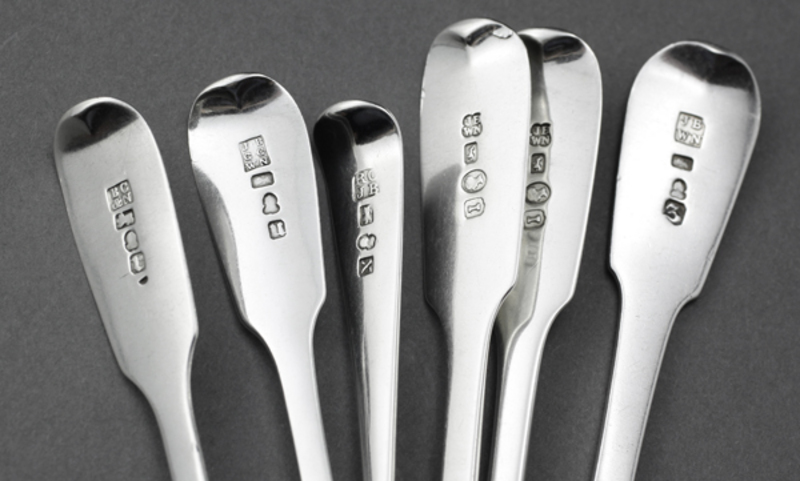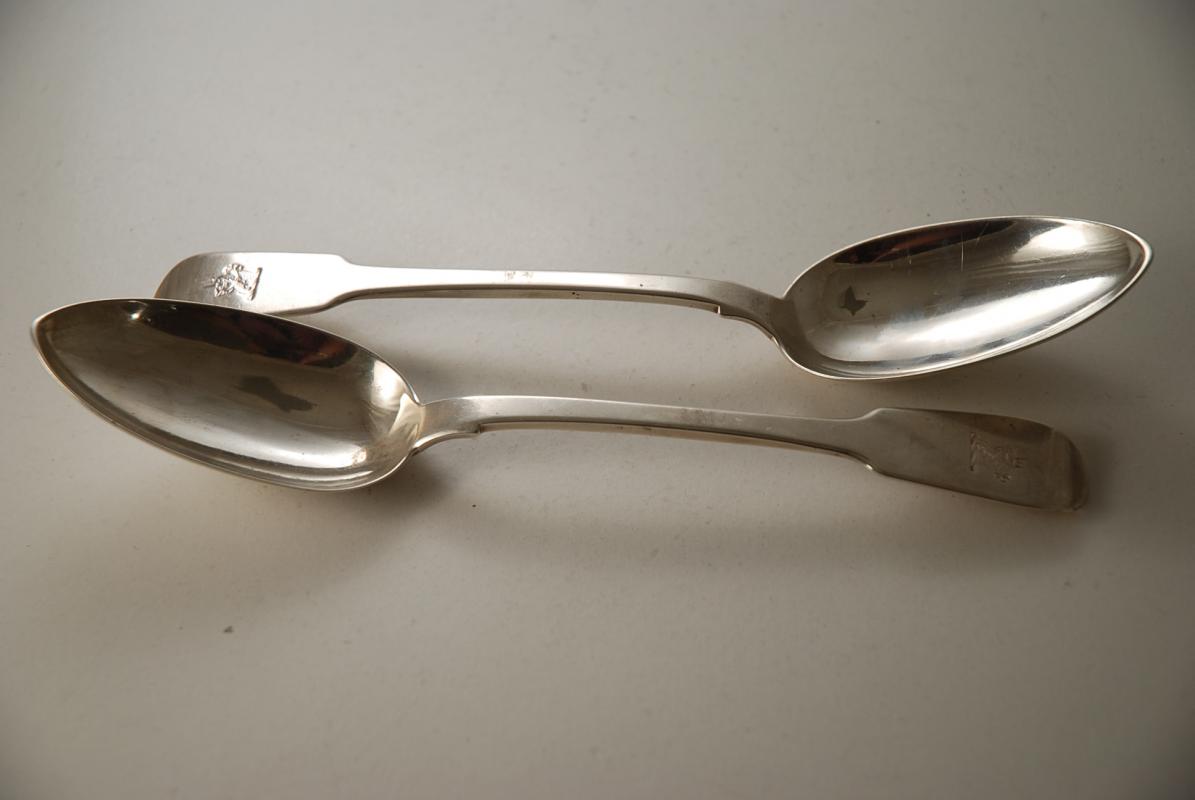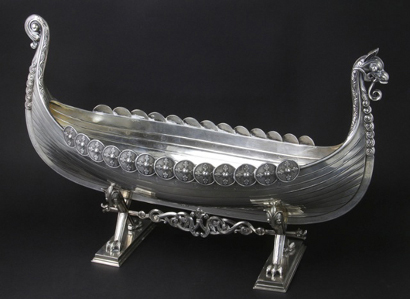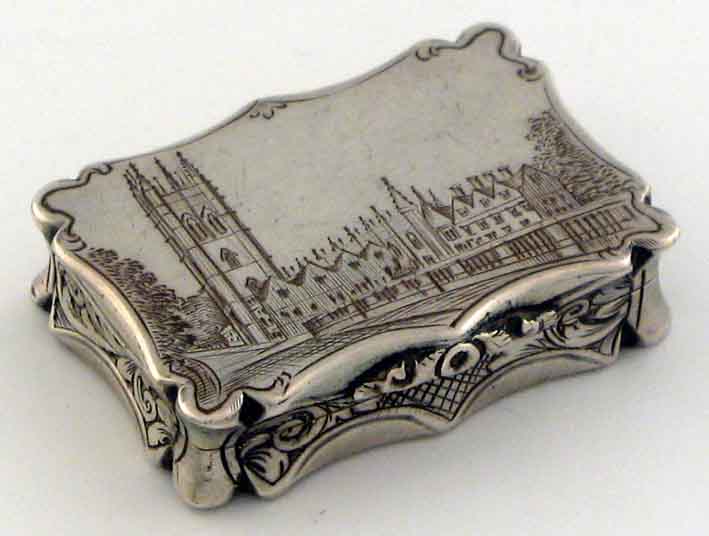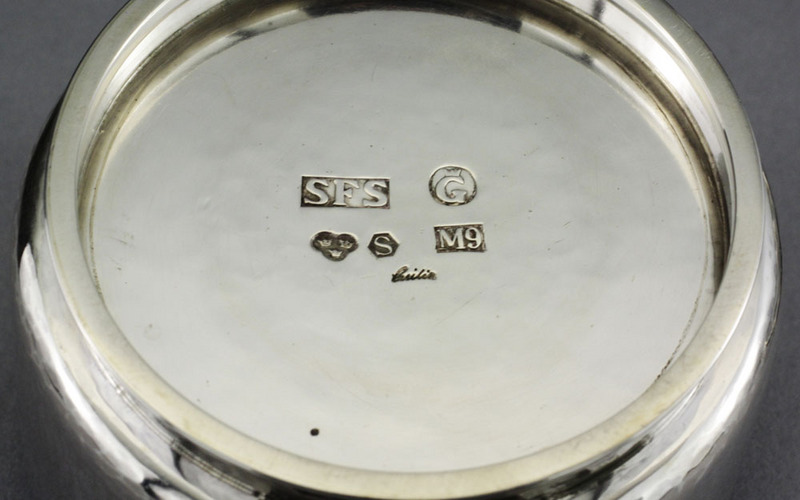YORK, England (1560 – 1858)

Hallmarks: Makers Mark JBWN Date Letter E 1840 Lion .925 Sterling Silver Finest, York Assay stamp which often gets mistaken for the London Assay stamp, Queen Victoria side cameo portrait.
Goldsmiths have been recorded working in York as early as 1270. It was granted it’s own Assay Office by the act of 1423 when the town mark of half leopard’s head/half fleur-de-lys was instituted. The date letter was introduced in 1560, and between 1632 and 1698 the town mark changed to half rose crowned/half fleur de lys. This in turn gave way in 1701 to a cross charged with five lions passant taken from the arms of the city. In 1716 the Assay office closed, and until it re-opened in 1776, York silver was “touched” at Newcastle. The Assay Office finally closed in 1858.
Notes on York Hallmarks
by Trevor Downes
The origins of official hallmarking on silver at York date to the Act of 1423 whereby York was appointed one of the seven provincial assay towns of England, however there is some evidence of local control going as far back as the year 1190. The York assay office carried on until the early eighteenth century when a serious decline in the local silver trade caused the office to be closed in 1716. During the sixty year closure, silver was still manufactured in York and the remaining silversmiths were granted admittance to the Goldsmiths Company at Newcastle and had their work hallmarked there. In the latter eighteenth century there was an upturn in the fortunes of York silversmithing.
The first town mark for York was a circular device, the left side a halved Fleur-de-Lys and the right side a halved Leopard’s Head. In 1701, the town mark was changed to a cross device containing five lions passant. York hallmarks contain a few anomalies; the Town mark is seldom seen on smaller items and, in the early years of the nineteenth century, the Lion Passant is sometimes to be found facing to the right, the reverse of its usual position. Like Exeter, Chester and Newcastle, York also opted to use the Crowned Leopard’s Head mark. This, in conjunction with the frequent non-use of the town mark, has York sterling often mistaken for London made.
Few makers are to be found on York silver and those in varying combinations of partnerships. Silversmiths not illustrated below include: Ambrose Beckwith, Richard Clark, William Astley, John Bell, & Charles Union.
Until 1701 only city mark, date letter and maker’s mark.
York (closed 1858)

It is becoming very hard to find hallmarks for York and production ceased for silver in 1858, over the years many items of silverware have been melted down and to find the York Assay stamp mark is becoming very scarce.
![]() TABLE OF YORK DATE LETTERS • 1568 – 1856
TABLE OF YORK DATE LETTERS • 1568 – 1856
City of York
 |
 |
 |
 |
 |
 |
 |
|
YORK MAKERS’ MARKS
| BC & N | James Barber George Cattle & William North |
JB GC WN |
James Barber George Cattle William North |
| B & N | James Barber William North |
JB WN |
James Barber William North |
| Bu | William Busfield | JB WW |
James Barber William Whitwell |
| HP & C | John Hampston John Prince Robert Cattle |
La | John Langwith |
| IH IP |
John Hampston & John Prince |
Ma | Thomas Mangy |
| JB & Co | James Barber & Co | P & Co | John Prince Robert Cattle |
| RC JB |
Robert Cattle James Barber |

